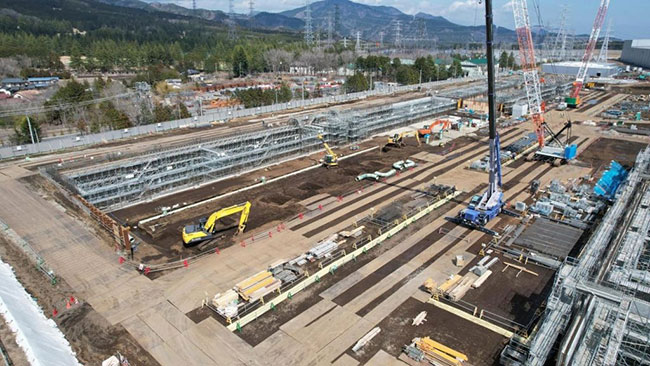
Features
Opinion
From the Editor: Try something new
October 11, 2022 By Jean Ko Din
 Proximar Seafood began construction in March. (Photo: Proximar Seafood AS)
Proximar Seafood began construction in March. (Photo: Proximar Seafood AS) We spend a lot of time in the industry talking about the large-scale builds that are pushing the technology for recirculating aquaculture systems (RAS) to its limits. Sometimes, I think we take for granted how new this industry still is.
RAS is still brand new to many parts of the world and it takes bold producers to make their mark in a part of the world where the technology has yet to be proven. This is why this issue’s cover story fascinates me.
In a country where RAS has been seen at much smaller scales (three to 30-ton production facilities), new commercial projects are suddenly popping up with annual production targets that range from 2,500 to 5,300 tons. We see a burgeoning RAS industry in Japan and the projects are not just for raising Atlantic salmon, but for mackerel and trout.
Further south, we also get a glimpse of Singapore through our latest RAS Talk interview with Esben Johnsen, CEO of Singapore RAS. He shares his experience in starting a new project for an island country that is looking to become more self-sufficient in its food production. However, this particular project is very early days, so there are still challenges to face ahead.
Now, Scotland is a part of the world that knows Atlantic salmon very well. But there is a group of Scottish producers who are collaborating with Italian researchers on a proprietary technology for purifying water in a RAS. A pilot project by FishFrom Ltd. is looking into photocatalytic ozonation, a hybrid technology that combines photocatalysis and ozonation at the same time. It is being supported by the European Institute for Innovation and Technology and they believe it could be a breakthrough in mitigating off-flavours in their RAS-raised salmon.
Chile is another RAS player that has been around for decades but we share a story about Salmones Austral and its first post-smolt facility. The system is already up and running and they are expecting to produce seven million salmon at 300 grams annually. With a little more knowledge and experience, they have ambitions of growing the fish up to 500 grams in the next few years.
What I’m learning from this issue is that the RAS industry is not for the faint of heart, nor is it for those who like the safe bet. If RAS is truly to become the future of aquaculture, there will be plenty more stories of people who are doing something that has never been done before. It would be irresponsible of us here at RAStech Magazine to cast a skeptical eye on projects like these, because only time itself will judge what projects will become sustainable. In the meantime, the industry should welcome as many innovators out there as it dares to attract. The race to meet the global food demand will require all our best ideas.
If you have unique RAS projects that we don’t know about yet, you can always email me at jkodin@annexbusinessmedia.com.
Print this page